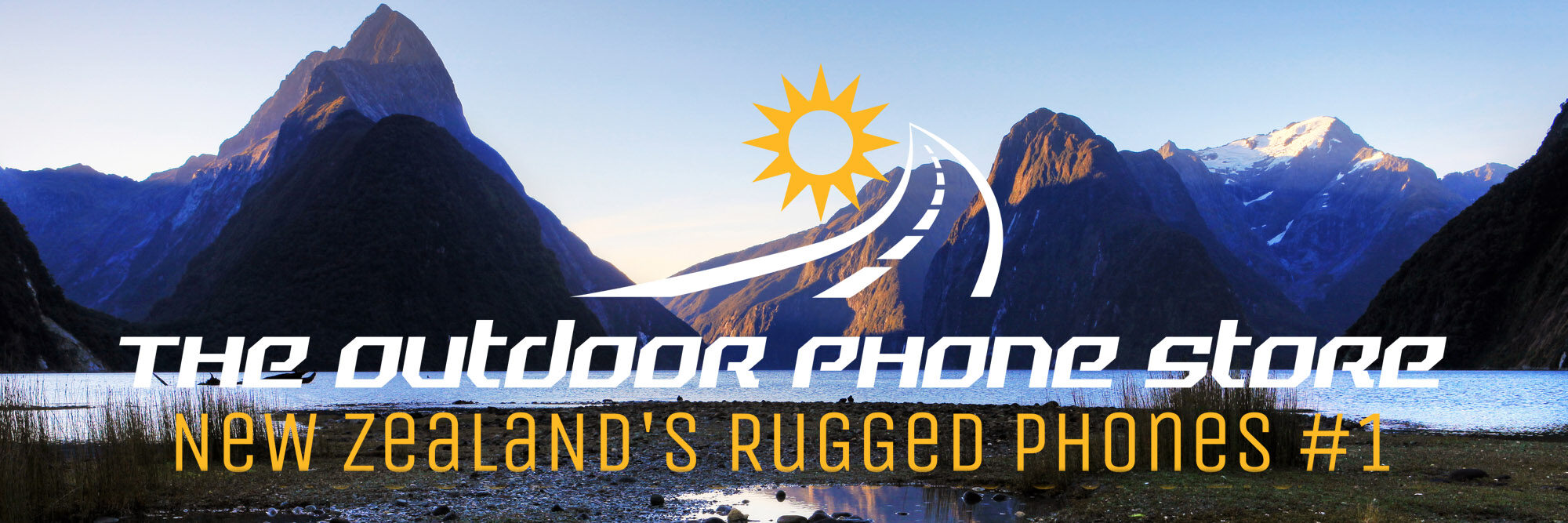A FONT OF KNOWLEDGE?
 PENGUIN ENCYCLOPEDIA
PENGUIN ENCYCLOPEDIA
Edited by David Crystal, Penguin, $75
What can you say about an encyclopaedia that gives 12 lines to Alexander the Great and 16 lines to the Beach Boys? Clearly, the pop present is being privileged over the classical past. However, this 1698-page tome is often factually inaccurate when dealing with the present (20th century). Under Mexican Art, David Alfaro Siqueiros has his last name omitted so he becomes David Alfaro; Booker Prize winner Keri Hulme is credited with the 1992 publication of Bait, a novel that she has yet to publish; Postmodernism only deals with architecture, ignoring the fact it is de rigeur in literature and art. Spelling mistakes include the Mexican president’s first name printed as Vincente instead of Vicente and painter Jose Clemente Orozco’s second name spelt as Clementi.
The omissions are a wonder indeed. Mick Jagger is in, Keith Richard is out; Al Capone is in, Lucky Luciano is absent; Keri Hulme is in, Janet Frame is not; Stalingrad is in, Kursk (world’s greatest tank battle) is missing; Michael Jackson is in, Peter Jackson is not; Everest-conqueror Edmund Hillary is necessarily in but Reinhold Messner, the world’s greatest mountaineer is not; Saddam Hussein is in and Osama bin Laden, as always, is invisible. Structuralism is in but astonishingly poststructuralism is not (though it is sneakily mentioned under Deconstruction with which it is mistakenly identified). I was surprised to find Timothy Leary, Peggy Guggenheim, Bryce Courtenay, Pierre Bourdieu (renowned anthropologist) Takla Makan desert and Google absent (though Desktop Publishing is in).
Another anomaly – perhaps common in other encyclopaedias – is contradictory entries. The Aborigines entry has them arriving in Australia 60,000 years ago while the Australian history section has a figure of 40,000. (Some have advanced the figure to 100,000 BC — shouldn’t all three estimates have been discussed?) The entry on Australian literature make no mention of Judith Wright, yet she merits a separate entry under her own name. This inconsistency of analysis is possibly explicable by two different people doing the two entries. But shouldn’t there be a match up? Similarly, William Burroughs is not mentioned under Beat Generation but under his own entry is declared to be a “spokesman of the Beat movement”. Also, stingily, there is no colour in any of the maps and no portraits (though that does allow more text).
Now for some appreciation. There are compendious lists of phobias, popes, highest mountains, deserts and, best of all, Crusades which includes sub headings under Background, Leaders and Outcomes — though
regretfully no Nobel Prize listings. Listings of musicians, artists and scientists are generally good. The quality of the paper and binding is excellent. Some may be wondering – in this Internet age do we still need encyclopaedias? I, for one, would not like to see them become obsolete because they present the opportunity par excellence for browsing by association and the alphabet. Also an encyclopaedia offers greater authority than the crackpot and often wildly inaccurate entries frequently found on the Internet. It cannot be repeated too often that an encyclopaedia, being a book, can never have power failure, a virus, intrusive advertisements or the irritatingly busy format deployed by many website homepages. However, the Penguin Encyclopedia needs a clean up on accuracy, improved expansion and consistency of inclusion and could do with some colour in its bland white pages. Hey, it’s still an encyclopaedia, my favourite kind of book for browsing new arcana and esoterica.
 THE LIFE OF GRAHAM GREENE Volume Three: 1955-1991
THE LIFE OF GRAHAM GREENE Volume Three: 1955-1991
By Norman Sherry, Jonathan Cape, $79.95
At 906 pages, this is the largest of the three volumes of an ongoing Greene biography that now totals 2251 pages — possibly the largest biography in history. It is a labour beyond love — 27 years in the making — and, to be honest, it is somewhat of a labour to read it.
Sherry’s ultraviolet style contrasts uneasily with Greene’s always clipped, spare prose. In contrast to the trouble-seeking journalist— novelist Greene, Sherry is an academic obsessive — he had already written five books on Conrad — and he surmises it was his dedication to Conrad (a kind of early Graham Greene) that may have helped in his selection as his biographer. Plus his hands-on willingness to go to exotic countries as part of his research. Following the wide-ranging peripatetic trail of Greene and his work has meant Sherry has been to Liberia, Sierra Leone, Thailand, Vietnam, Japan, Malaysia, Kenya, Panama, Mexico, Barbados, France, Switzerland, Argentina, Paraguay, Ireland and Spain – bravo! (And shouldn’t Haiti, Nicaragua and Cuba be added?)
This biography is of the Boswellian type — no detail omitted. No pithy one liners when a paragraph will do the job – Sherry uses large half page (or more) quotes. When he deals with some of Greene’s major novels, such as A Burnt Out Case, he gives us three chapters whereas one would have sufficed. The overall effect is one of sauntering excess and under-editing. While it is arguably in order to refer to Greene as a maverick, loner, provocateur, rebel and anarchist, the description of Green as politically immature, unripe, callow and jejune looks like three adjectives too many.
Sherry works assiduously, and a trifle over-gleefully, in identifying originals for Greene’s characters, marking him as a biographer of the old school and not a text only postmodernist. His actual literary approach to Greene – influence of cinematic techniques or Hemingway (say) — in the light of contemporary trends of biography, is surprisingly limited.
Having detailed — elaborately as always — Greene’s stubborn inability to quite believe in hell, heaven, angels, heaven or Satan (though he does think of God as Christ), Sherry concludes in somewhat exasperated tones, it’s difficult to buttonhole Greene as either Roman Catholic or Christian – yet there is Green’s oxymoronic statement that he is was a “Catholic agnostic”(or worse still “Catholic atheist”) plus the agonised arguing that occurs so powerfully in Greene’s novels about the nature of evil, God, sin etc. For this reviewer (and I suspect for many more than fully admit it), this agonised I-want-to-believe-but-can’t-quite-believe strikes a resonant chord. Certainly, it is clear—and I am at one with Sherry on this — that Greene is pro-victim which can render his ideological stances fluid, rather than consistent.
Two of the most interesting matters dealt with are Greene’s clash with corruption in Nice – his tough dedicated fight on behalf of his daughter-in-law against a local thug and a corrupt mayor which alas, ended in legal failure – and his failure to win the Nobel prize. I am convinced by Sherry’s account that it was a dedicated Greene-opponent on the controversial committee, one Arthur Lundkvist, who vowed never to vote for Greene because his play The Living Room, was Catholic “propaganda of the most vulgar type”. Even if this were so, the large amount of brilliant work that flowed from Greene’s busy pen plus general world literary opinion should have prompted the committee to press for Greene’s strongly merited award. Unsurprisingly, the English literary establishment considered Greene the most deserving of the writers who had never won the world’s most prestigious literary prize.
While it frequently gives off the sanctimonious odour of hagiography, Sherry does reproach Greene from time to time — e.g. for being a supporter of Castro after executions became commonplace. Despite its stylistic infelicities, tortured metaphors, lapses into banality, embarrassing asides to the reader, excessive detail, over extended treatment, and its occasional presumption to read Greene’s mind too dogmatically, this biography is a must read for any Greene fan.
 TOLKIEN’S GOWN & Other Stories of Great Authors and Rare Books
TOLKIEN’S GOWN & Other Stories of Great Authors and Rare Books
By Rick Gekoski, Constable, $34.95
In general, I have regarded book collectors and first edition freaks as fetishists who are more interested in the wrapping than the present, brassieres instead of breasts. Having enjoyed Mr Gekoski’s lucid prose and accumulation of delightful anecdotes, my previous value judgment has been white-anted somewhat. Despite his eye for the deal, the multi-talented Gekoski also has an ear for the interesting human story, hence this witty and attractively presented book (which I am hoping will one day prove a valuable first edition).
The book kicks off with a chapter on the controversial Lolita, Nabokov’s sordid tale of a middle-aged lecher’s seduction of a barely pubescent girl. Shocking as this relationship might be, Nabokov’s exquisite prose turns it into a tragic love story. In his cheerfully lucid style, Gekoski relates how after he sold a first edition of Lolita for $4900, he received a letter from Graham Greene asking how much he (Greene) could get for a copy inscribed to him by the Russian author.
Apparently, this in an example of what rare book dealers call an “association copy”, one presented by the author to someone of importance. As Greene eminently qualified, Gekoski insisted on paying him $7200 (Greene wanted less!), and sold it for a profit (mysteriously, or tactfully, not revealed). When Gekoski last heard, the on sold book fetched $264,000 which left him “sick with seller’s remorse”. Since reading this revealing anecdote, I have been urging my friends at launches of my books to hurry up and become “persons of importance” so I can buy the book back off them and resell it for a whacking profit. So far, the scheme has yet to take off. And is unlikely to, for almost none of my books have that piece de la resistance, a dustwrapper, which rockets the price for any rare book into the ionosphere.
If over a quarter of million dollars sounds like big money, it has been topped by Gekoski’s estimate for a first edition Lord of the Flies – $450,000. A first edition inscribed Ulysses actually sold for $460,000 – the highest price thus far. Touchingly, Gekoksi admits that Ulysses is a tough read, even though he considers it the greatest book of the twentieth century. This promisingly profitable spiral was recently put in the shade when the original manuscript of Jack Kerouac’s On the Road sold for $2,430,000 which makes me wish cryonic preservation really works and poor old Jack could return and feast off the posthumous profit.
Packed with colourful stories of famous writers, this book is surely one of the more notable of the 110,000 books published in England last year, most of which, Gekoski reminds us, will soon be forgotten. I am hoping the first edition of his book will soar in value — when Gekoski soon visits the Antipodes I must ask him to inscribe it.
 THE FACTS BEHIND THE HELSINKI ROCCAMATIOS
THE FACTS BEHIND THE HELSINKI ROCCAMATIOS
By Yann Martel, Canongate, $29.95
The Life of Pi was such a delightful book I vowed I’d read anything else that came from the pen of Yann Martel. As is often the case, the massive success of one book prompts an issue (or reissue) of earlier titles. Helsinki consists of two novellas and two short stories published earlier in the author’s career.
The title short novel is by far the most significant work of the quartet. Of the remaining stories, the formally experimental “Manners of Dying” which presents postmortem letters about an execution as variations on a theme of what the condemned man ate and the manner of his death, is the most interesting. The star of the collection is without question the Helsinki novella.
A well-known literary phenomenon is that a grand (as it were) disease eventually prompts the creation of some grand literary masterpieces. Among these are – The Magic Mountain (tuberculosis), Doctor Faustus (syphilis), A Burnt Out Case (leprosy), Awakenings (sleepy sickness). When AIDS played its dread hand in the early 80s, I was (almost) morbidly waiting for the appropriate literary work to do it justice. Several plays and films have so far appeared but none as powerful or skilful as this novella. It could not be validly claimed that this work is a grand masterpiece but it is a minor one, relentless in its grim clinical detail.
However, Helsinki offers more than just pathological footnotes.
Inspired by the story-telling in the face of the Black Plague in Boccaccio, a nameless narrator puts the proposition to his blood transfusion-infected friend Paul that they should mutually invent stories to, as it were, defeat the doom of the encroaching disease. One event chosen from each year the century thus far — 86 stories in all — would form the narrative backdrop. The stories would centre around a Canadian family in a city neither of the two story tellers had ever been to Helsinki. The combination of factual base combined with an imaginative family in an “imagined” though real city, would form a satisfyingly solid tapestry. It may sound a bit contrived but it makes a compelling counterpoint to the deepening and irreversible manifestations of the disease.
It would be difficult, if not impossible, to find anyone who has not heard of AIDS. Yann Martel’s short powerful novella tells us of the brutal destruction wrought by the disease and of how two friends responded to it with “narrative therapy”.. If art does not work a physical miracle, it can provide the next best thing – a compensatory defeat by the imagination.
 HELL OR HIGH WATER: Surviving Tibet’s Tsangpo River
HELL OR HIGH WATER: Surviving Tibet’s Tsangpo River
By Peter Heller, Allen & Unwin, $35
Until the arrival of maturity and arthritis, I used to nourish the fantasy, however remote, that I might one day go kayaking, preferably on some previously unkayaked river. This would prove to myself (and to others) that I had at last acquired the warrior manhood that my prior dismal performances at football, fighting, and free climbing had failed to evidence; that I might at last be redeemed by one all out fluke performance on raging white water. A fantasy I can no longer sustain. Instead, I can now recline on my sofa, sip the “white water “off my beer” and read about how real men do it. Among these intrepid dudes are two New Zealanders – Mike Abbott, said to be the best paddler in the world, and Dave Allardice. When Abbott won a big cash prize he shared it with his broke mates.
Like so many exponents of extreme sports, participants peak early 25-30 (say). It’s not an activity for one’s middle years (though there are exceptions). Just to reach the Tsangpo river is a feat in itself. It’s buried at the bottom of a 15,000 foot gorge at the eastern end of the Himalayas and has defeated earlier explorers for more than a century. Heller vividly revisits Victorian times when fearless Indians (who came to be called Pundits) crossed the border into forbidden Tibet as pilgrims and proceeded to map the terrain for the British by walking 2000 measured steps per mile, using modified prayer beads as pedometers, carrying prismatic compasses inside their prayer wheels and thermometers in hollow walking sticks in order to obtain hypsometric altitude readings. James Bond’s 007 antics were just a feeble continuation of this daring nineteenth century espionage ingenuity. These early measurements ascertained just where Lhasa was situated and established that the Tsangpo met the Brahmaputra.
Heller, who is a kayaker himself, describes the phenomenon of white water with a specialist vocabulary – “wave trains”, “mean comber”, “boulder garden”, “center of the tongue”. The prose, like the river, is wild but also like the paddlers, controlled. Almost beyond imagining, is an exhilarating though arguably insane activity called squirt boating where the kayak becomes submerged and then pops out – squirts back into the air. Another exhibitionist variety is freestyle or rodeo kayaking where the kayak “catapults forward in a series of fast end-over-end cartwheels” — I think I’ll take another sip of my beer, thank you. Though some consider freestylers made the best river runners, Scott Lindgren, one of the best paddlers in the world, asserted that the opposite was the case. His view was that “riding holes” would be worthless on the mighty Tsangpo.
The first Victorian explorers hoped to find a cataract as mighty as the Victorian falls but it turned out to be a “mere “ 150 feet high – now shrunk to 112 feet. For kayakers, the glory of the Tsangpo river is its wild white water, gloriously rendered in the controlled tumult of Heller’s expert prose.
Beside the wonder of the world’s most terrifying foam piles, wave trains and rolling haystacks, there is also the ferocious and lyric beauty of the landscape, rebellious porters who want more money and the ominous possibility of being eaten by a Bengal tiger. An intoxicating broth of a book.







